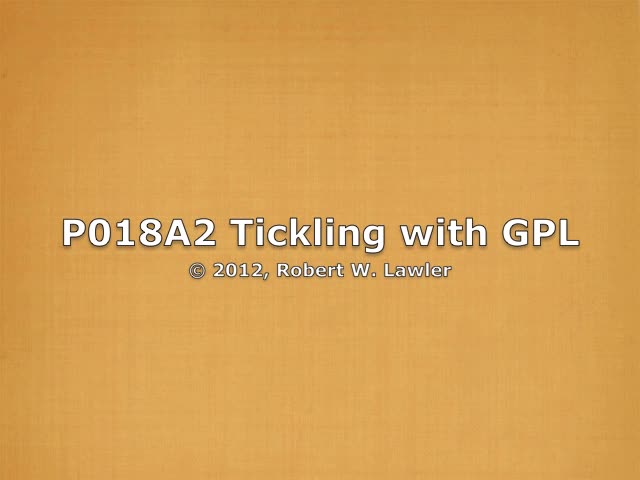
P18A2 Clip Notes
| Notes:n:nn | by Analyst, 10/17/2024 |
| Setting,Props | Brookline Carriage House: |
| Actors,Aims | Peggy and Mom; Bob on camera. |
| Episode A: | Mom: Can you make any noise? [ re-seats Peggy on her lap, facing camera] “Woo-who” Mom: [begins sounds of an insect that will fly to Peggy and tickle her] catch it. Catch, catch, catch it. Mom: [On repetition of the action, when Mom stops, Peggy continues looking for the pretend-insect] You’re looking for it? It’s right here. |
| Episode B: | Mom: [lays Peggy down on her knees] There we go. Let’s wipe off those hands a little bit. You’re getting glommy. Mom: Is it up? Up, up, up, up, up. Up we go. [Mom forefinger is nearby; Peggy takes it in her mouth] Is that good? Good. Good? It doesn’t give milk though, does it? {When Mom tries to wipe her mouth, Peggy takes the cloth to mouth]. Mom: There you go. You thought that was funny last night. Here, there you go. You thought that was funny last night. Definitely. Here, here you go. [Bouncing Peggy gently on her knees] Is that good? That tastes good? No?… Well… Mom: Ride a horse to Boston. Ride a horse to Linn. Careful when you get there. Don’t fall in. {Supporting Peggy as she drops her lower] It doesn’t seem to go over as well as Pop goes the Weasel… [Lifting Peggy repeatedly] Up … up… You dropped it. [the cloth] “Ah ha!” Up we go. Up we go. Up we go. Up, Down, down, down, down, down… |
| Episode C: | Mom: [As Peggy retakes the cloth] You okay? Munch, munch, munch. What are you doing? What are you going to do when you start getting your teeth caught in there?… Now I know how they get so soggy [as Peggy pushes both cloth and fist in her mouth] Mom: [after a bit of bouncing, Mom turns Peggy towards a mirror] Can you see yourself over there? You’re not going to look that far, huh? See you over there? You just don’t feel like… What’s that? It’s your toes. They’re ticklish. They’re not ticklish yet. Oh, glom, glom. |
| Episode | |
| Summary by AI |
Caregiver encourages Peggy to make sounds and re-seats her facing the camera, saying “woo-who.” Plays a pretend insect game that “flies” to tickle Peggy; Peggy searches for it even after it stops. Lays Peggy on her knees, wipes her hands, and comments they’re getting “glommy.” Lifts Peggy up repeatedly; Peggy puts the caregiver’s forefinger in her mouth, prompting a milk joke. When wiping Peggy’s mouth, Peggy grabs the cloth and brings it to her mouth. References Peggy finding something funny the previous night while offering the cloth again. Gentle knee bouncing and taste questions lead into a nursery rhyme: “Ride a horse to Boston…” Continues playful lifting with “up, up, up” and “down, down, down,” retrieving the dropped cloth. Peggy munches on the cloth and her fist; caregiver notes future teething and why the cloth gets soggy. Turns Peggy toward a mirror and explores toes; Peggy shows limited interest, and toes aren’t ticklish yet; ends with “glom, glom.” |
| Narrative by AI |
A caregiver and an infant named Peggy share a quiet, playful moment that unfolds through simple games, gentle motions, and familiar rhythms. The interaction begins with a light, imaginative prompt—a pretend insect sound that prompts Peggy to search and track, showing her attention and curiosity. The caregiver adjusts Peggy’s position, engages her face-to-face, and uses playful vocalizations to sustain interest. These early, low-key exchanges create a calm pace and set the tone for the rest of the scene. Practical care blends seamlessly with play. The caregiver wipes Peggy’s hands, comments on their texture, and responds to Peggy’s cues—like when Peggy mouths a nearby finger or guides a cloth to her mouth. There is easy, conversational narration: “Is that good?” “It doesn’t give milk though, does it?” These lines reflect a responsive style, acknowledging what Peggy is doing without interrupting her exploration. Rhythm and movement become part of the engagement. Gentle bouncing, repeated phrases like “Up we go,” and familiar rhymes (“Ride a horse to Boston”) introduce patterns that are both soothing and stimulating. The caregiver notes which games seem to “go over” better, tuning the activity to Peggy’s reactions. Small objects—like the cloth—become focal points for repetition and anticipation, as Peggy drops and retrieves them while the caregiver comments on the sequence. Mouthing and chewing take center stage for a while, as Peggy explores the cloth with both fist and mouth. The caregiver narrates the soggy result and wonders aloud about future teething, keeping the tone observational rather than directive. This section highlights how everyday items support sensory exploration, and how caregivers naturally frame these moments with gentle humor and acceptance. Toward the end, the scene shifts to visual exploration with a mirror and to physical play with Peggy’s toes. The caregiver invites Peggy to look at her reflection and tests for a tickle response, observing what does and doesn’t capture her interest. The interaction closes much like it began: with soft sounds, repeated words, and simple, responsive play that emphasize connection, comfort, and the subtle flow of an ordinary moment together. |
| Link Index | Panel P018, Language Development, Object Exploration, Social Interactions |
| Themes, Interplay |
